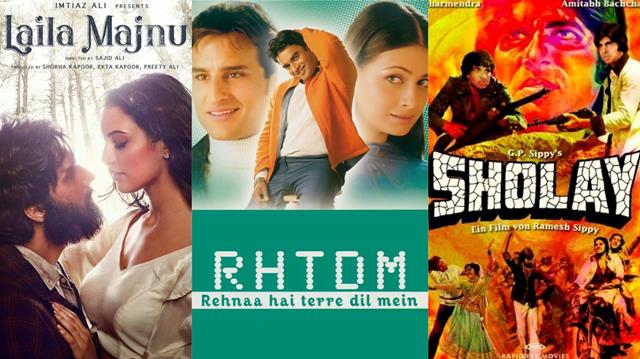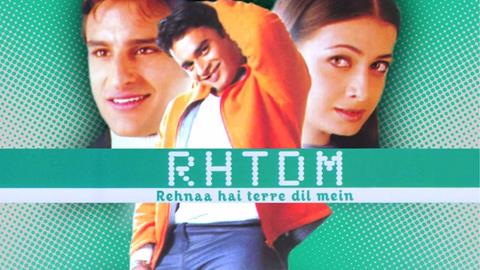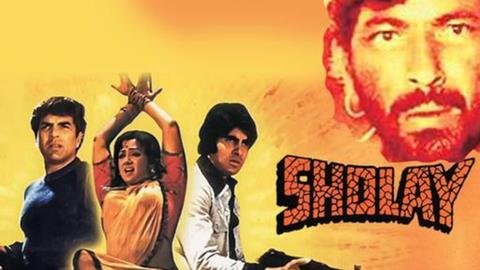The re-release wave hits Indian cinema; Do audiences approve? What's the future?
The last few months have seen a surprising number of films returning to theaters. Among them are the cult classics and the critically acclaimed underperformed gems.
Published: Thursday,Sep 05, 2024 09:38 AM GMT-06:00

In recent months, Bollywood has witnessed an unexpected yet fascinating trend—a surge in the re-release of older films, some of which didn’t fare well during their initial runs, while others were blockbusters of their time. This practice of bringing back films to the big screen is not new to the industry, but its resurgence in today’s streaming-dominated world raises intriguing questions about its significance, the business behind it, and its potential future in Bollywood.
The last few months have seen a surprising number of films returning to theaters. Among them are the cult classic "Gangs of Wasseypur" (2012), which is known for its gritty portrayal of crime and revenge, and the romantic drama "Laila Majnu" (2018), which originally had a lackluster performance at the box office. Additionally, iconic films like Salman Khan's "Maine Pyar Kiya" (1989), "Rehnaa Hai Terre Dil Mein" (2001), and the sports drama "Chak De! India" (2007) have also made their way back to the big screen.
These films, once available primarily on streaming platforms, are drawing audiences back to cinemas, sometimes with surprising success. For instance, "Laila Majnu," despite its initial lukewarm reception, saw an average occupancy of 40% across India during its re-release, with some theaters in Mumbai registering over 80% occupancy. This response has led many in the industry to re-evaluate the potential of re-releases as a viable business strategy.
The Significance of These Re-Releases

The resurgence of these films is more than just a nostalgia trip for older audiences. It represents a deeper cultural and business phenomenon. For the younger generation, who may have missed these films in theaters or were too young to appreciate them at the time, re-releases offer a chance to experience these stories in the immersive environment of a cinema.
Moreover, re-releasing films allows filmmakers and producers to gauge the lasting appeal of their work. A film like "Rockstar" (2011), which had a mixed reception upon release, has now found a new audience, reaffirming its status as a cult classic. Similarly, films like "Yeh Jawaani Hai Deewani" (2013) and "Hum Aapke Hain Koun...!" (1994) have shown that their charm and emotional resonance remain intact, even after years.
The Experts Weigh In

Trade experts and industry insiders see this trend as a win-win situation for both theaters and film rights holders. According to trade analyst Atul Mohan, the re-release strategy helps fill cinema halls, which have been struggling with the underperformance of many new releases. "It’s beneficial for exhibitors, and whoever holds the right to the film also earns money," he explains. This is particularly crucial in a time when new films, even those led by major stars, are failing to draw large audiences.
The financial aspect cannot be overlooked. The cost of re-releasing a film is significantly lower than producing and marketing a new one. Additionally, the guaranteed audience—either through nostalgia or word-of-mouth about the film’s re-release—ensures that these films often turn a profit, or at the very least, mitigate losses incurred during their initial release.
Imtiaz Ali’s Perspective

Filmmaker Imtiaz Ali, whose films "Rockstar" and "Laila Majnu" have recently been re-released, sees this trend as a "people-led movement." In a recent interview, Ali expressed his gratitude towards the audience for their renewed interest in his films. "I’m thankful to the audience that they’ve started this new trend that the film is permanent and the fact that it can always be brought back to the theatre," he said.
Ali’s films, known for their emotional depth and complex characters, have always had a niche audience. However, the re-release of these films has allowed them to reach a broader demographic, reinforcing the idea that good cinema can be timeless.
The Business Impact on Theatre Chains
For theater chains, re-releases have been a lifeline, especially after the tough years during the pandemic. With a decline in footfall due to the proliferation of streaming platforms and the underperformance of several high-budget films, re-releases provide a steady flow of revenue. The overheads for screening an older film are much lower, and the risk is minimal since these films have already proven their worth.
Moreover, re-releases help maintain a diverse slate of films in theaters, offering something for everyone—from nostalgic older audiences to younger viewers discovering these films for the first time. This variety is crucial for theaters, as it draws in different segments of the population, ensuring better occupancy rates.
A Return to an Old Tradition
The trend of re-releasing films is not a novel concept in Bollywood. In the '70s, '80s, and '90s, it was quite common for films to be re-released due to public demand. Classics like "Mother India" (1957), "Mughal-E-Azam" (1960), and "Sholay" (1975) made successful returns to theaters, sometimes years after their initial release. This practice gradually faded as the home video market and later, streaming platforms, became more popular.
However, the recent resurgence suggests that the magic of the big screen remains unparalleled. There is something special about watching a film in a darkened theater, with a collective audience, that cannot be replicated at home. This shared experience, combined with the visual and auditory spectacle of cinema, is what draws audiences back.
The Future of Re-Releases in Bollywood
Looking ahead, it’s likely that this trend will continue, especially as more filmmakers and producers recognize the value of their past works. With the right marketing and strategic timing—such as re-releasing films during festive seasons or anniversaries—Bollywood can continue to tap into this market.
Furthermore, as audiences become more discerning, the choice of films for re-release will likely broaden. We may see lesser-known gems, critically acclaimed but commercially underperforming films, and even experimental cinema getting a second chance in theaters.
Your reaction
 Nice
Nice Awesome
Awesome Loved
Loved LOL
LOL OMG
OMG Cry
Cry Fail
Fail
























Comments (0)